| 产品编号 |
中文品名 |
英文品名 |
| HR4-126 |
11 刀片替换装 |
Replacement #11 Blade |
| HR4-904 |
CrystalCap Magnetic Vial |
CrystalCap™, Vial only |
| HR4-729 |
CrystalWand Magnetic, Straight |
CrystalWand™ Magnetic, Straigh |
| HR4-837 |
Micro-Tools II Set |
Micro-Tools II™ Set |
| HR4-811 |
Micro-Tools Set |
Micro-Tools™ Set |
| HR3-172 |
VDX 24孔板,带密封剂 |
VDX™ Plate, with sealant |
| HR4-902 |
带磁力底座 |
CrystalCap™, without Vial |
| HR4-733 |
带磁力底座 |
CrystalCap™, with Vial |
| HR4-745 |
带铜管磁力底座 |
CrystalCap™ Copper 18 mm, with |
| HR4-708 |
冻存套 |
CryoSleeve™ |
| HR3-217 |
硅化方形盖玻片22mmx0.22mm |
22 mm x 0.22 mm Siliconized Sq |
| HR4-671 |
夹钳-弯 |
Vial Clamp™ – Curved, 45°/135° |
| HR4-670 |
夹钳-直 |
Vial Clamp™ – Straight |
| HR4-316 |
胶 |
Super Glue |
| HR4-506 |
胶带 |
3 inch wide x 55 yard Crystal |
| HR3-083 |
结晶板 2孔 |
MRC 2 Well Crystallization Pla |
| HR3-125 |
结晶板 3孔 |
3 Well Crystallization Plate ( |
| HR4-217 |
晶体探针 |
Crystal Probe |
| HR4-662 |
泡沫保温瓶 |
Spearlab Cryogenic Foam Dewar |
| HR4-673 |
泡沫保温瓶 |
Spearlab Cryogenic Foam Dewar |
| HR4-674 |
泡沫保温瓶 |
Spearlab Cryogenic Foam Dewar |
| HR4-675 |
泡沫保温瓶 |
Spearlab Cryogenic Foam Dewar |
| HR1-008 |
液氮罐 CX100 (含运输箱) |
CX100 Cryo-Express Dry Shipper |
| HR2-912-37 |
|
Crystal Screen 2™ #37 |
| HR2-501 |
|
50% v/v Jeffamine® M-600® pH 7 |
| HR2-509 |
|
1.0 M BICINE |
| HR2-517 |
|
100% Polyethylene glycol 300 |
| HR2-523 |
|
50% w/v Polyethylene glycol 1, |
| HR2-525 |
|
50% w/v Polyethylene glycol 1, |
| HR2-529 |
|
50% w/v Polyethylene glycol 4, |
| HR2-533 |
|
50% w/v Polyethylene glycol 6, |
| HR2-537 |
|
1.0 M Magnesium formate dihydr |
| HR2-541 |
|
3.5 M Ammonium sulfate |
| HR2-545 |
|
2.0 M Lithium sulfate monohydr |
| HR2-547 |
|
7.0 M Sodium formate |
| HR2-549 |
|
1.6 M Sodium citrate tribasic |
| HR2-551 |
|
4.0 M Sodium phosphate monobas |
| HR2-557 |
|
2.0 M Calcium chloride dihydra |
| HR2-563 |
|
1.0 M Zinc acetate dihydrate |
| HR2-102 |
|
StockOptions™ Hepes |
| HR2-103 |
|
StockOptions™ Bis-Tris Propane |
| HR2-104 |
|
StockOptions™ Citric Acid |
| HR2-106 |
|
StockOptions™ Bis-Tris |
| HR2-107 |
|
SaltRx™ 1 |
| HR2-109 |
|
SaltRx™ 2 |
| HR2-110 |
|
Crystal Screen™ |
| HR2-112 |
|
Crystal Screen 2™ |
| HR2-114 |
|
MembFac™ |
| HR2-116 |
|
Natrix™ |
| HR2-117 |
|
Natrix™ 2 |
| HR2-118 |
|
Nucleic Acid Mini Screen™ |
| HR2-126 |
|
PEG/Ion Screen™ |
| HR2-235 |
|
StockOptions™ Sodium Citrate |
| HR2-237 |
|
StockOptions™ Tris Hydrochlori |
| HR2-239 |
|
StockOptions™ Sodium Cacodylat |
| HR2-241 |
|
StockOptions™ pH |
| HR2-245 |
|
StockOptions™ Salt |
| HR2-249 |
|
StockOptions™ Succinic Acid |
| HR2-320 |
|
Seed Bead™ |
| HR2-406 |
|
Detergent Screen HT™ |
| HR2-428 |
|
Additive Screen™ |
| HR2-434 |
|
Reductive Alylation Kit |
| HR2-442 |
|
Heavy Atom Screen™ Pt |
| HR2-444 |
|
Heavy Atom Screen™ Au |
| HR2-446 |
|
Heavy Atom Screen™ Hg |
| HR2-448 |
|
Heavy Atom Screen M1™ |
| HR2-450 |
|
Heavy Atom Screen M2™ |
| HR2-082 |
|
PEGRx™ 1 |
| HR2-084 |
|
PEGRx™ 2 |
| HR2-096 |
|
Silver Bullets™ |
| HR2-098 |
|
PEG/Ion 2 Screen™ |
| HR4-315 |
|
CrystalWand™ Magnetic, 45° McM |
| HR4-350 |
|
Large Applicator (200 & 350 µl |
| HR4-625 |
|
Mounted CryoLoop™ – 20 micron, |
| HR4-637 |
|
CryoTong™ 18 mm (standard 110 |
| HR4-709 |
|
CryoCane™ 5 Vial Holder |
| HR4-711 |
|
CryoCane™ 6 Vial Holder |
| HR2-211 |
|
Grid Screen™ Ammonium Sulfate |
| HR2-213 |
|
Grid Screen™ PEG 6000 |
| HR2-227 |
|
StockOptions™ Polymer |
| HR2-233 |
|
StockOptions™ Sodium Acetate |
| HR4-931 |
|
CryoLoop™ – 20 micron, 0.2 – 0 |
| HR4-945 |
|
Mounted CryoLoop™ – 20 micron, |
| HR4-947 |
|
Mounted CryoLoop™ – 20 micron, |
| HR4-953 |
|
Mounted CryoLoop™ Sampler – 20 |
| HR4-955 |
|
Mounted CryoLoop™ – 20 micron, |
| HR4-957 |
|
Mounted CryoLoop™ – 20 micron, |
| HR4-959 |
|
Mounted CryoLoop™ – 20 micron, |
| HR4-961 |
|
Mounted CryoLoop™ – 20 micron, |
| HR4-963 |
|
Mounted CryoLoop™ – 20 micron, |
| HR4-970 |
|
Mounted CryoLoop™ – 20 micron, |
| HR4-971 |
|
Mounted CryoLoop™ – 20 micron, |
| HR4-989 |
|
CryoLoop™ – 10 micron, 0.3 – 0 |
| HR2-128 |
|
Crystal Screen Lite™ |
| HR2-138 |
|
Additive Screen HT™ |
| HR2-140 |
|
PCT™ – Pre-Crystallization T |
| HR4-313 |
|
Mounted CryoLoop™ – 20 micron, |
| HR2-601 |
|
100% Polyethylene glycol 200 |
| HR2-607 |
|
50% w/v Polyethylene glycol 10 |
| HR2-609 |
|
30% w/v Polyethylene glycol 20 |
| HR2-611 |
|
100% Polyethylene glycol monom |
| HR2-613 |
|
50% w/v Polyethylene glycol mo |
| HR2-615 |
|
50% w/v Polyethylene glycol mo |
| HR2-625 |
|
6.0 M 1,6-Hexanediol |
| HR2-637 |
|
5.0 M Sodium chloride |
| HR2-723 |
|
1.0 M BICINE pH 9.0 |
| HR2-755 |
|
100% Tacsimate™ pH 7.0 |
| HR2-761 |
|
3.0 M DL-Malic acid pH 7.0 |
| HR2-801 |
|
TCEP hydrochloride |
| HR2-821 |
|
2.0 M Magnesium sulfate heptah |
| HR2-829 |
|
100% Tacsimate™ pH 8.0 |
| HR2-857 |
|
4.0 M TMAO |
| HR2-859 |
|
100% Polyethylene glycol 600 |
| HR2-910-08 |
|
Crystal Screen™ #08 |
| HR2-144 |
|
Index™ |
| HR4-993 |
|
Mounted CryoLoop™ Sampler – 10 |
| HR4-995 |
|
Mounted CryoLoop™ – 10 micron, |
| HR4-999 |
|
Mounted CryoLoop™ – 10 micron, |
| HR6-146 |
|
1.0 mm Quartz Capillary |
| HR8-034 |
|
Cryo Puck Carrier |
| HR8-035 |
|
Porcupine Push Tool |
| HR8-036 |
|
Puck Wand |
| HR8-037 |
|
Cryo Puck Base Removal Platfor |
| HR8-038 |
|
Angled Cryo Puck Tong |
| HR8-039 |
|
Cryo Puck Dewar Loading Tool |
| HR8-114 |
|
CrystalCap HT™, Vial only |
| HR8-133 |
|
Seeding Tool |
| HR8-173 |
|
CrystalCap™ Copper HT, 0.025 – |
| HR8-174 |
|
CrystalCap™ Copper HT, 0.05 – |
| HR8-175 |
|
CrystalCap™ Copper HT, 0.1 – 0 |
| HR8-176 |
|
CrystalCap™ Copper HT, 0.2 – 0 |
| HR2-575 |
|
1.0 M Sodium cacodylate trihyd |
| HR2-581 |
|
1.0 M Hydrochloric acid |








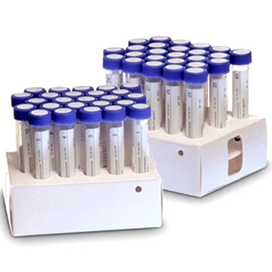
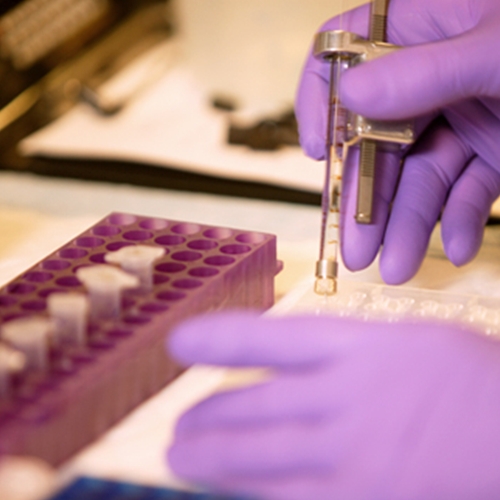
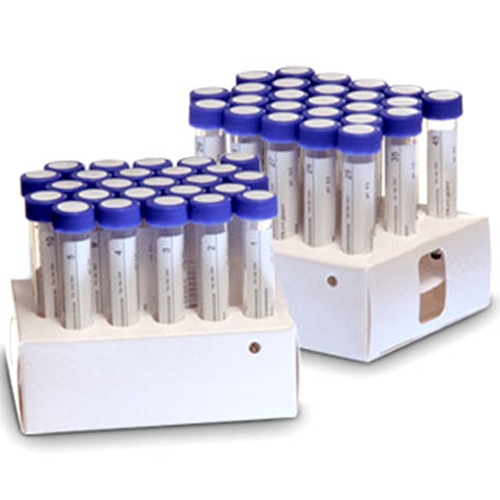
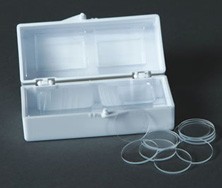
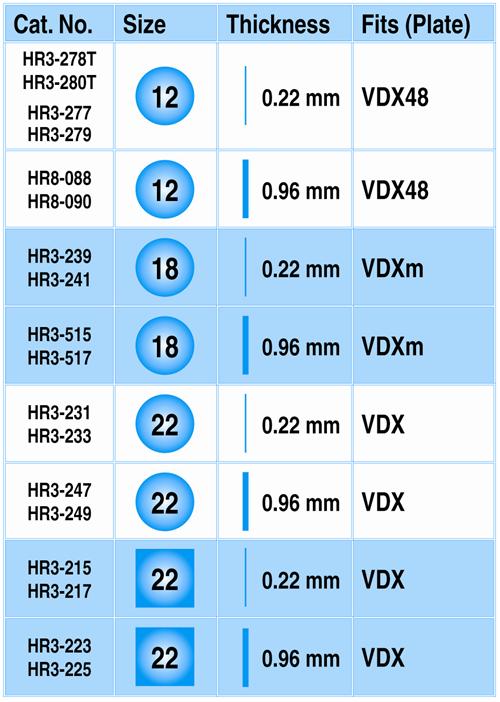
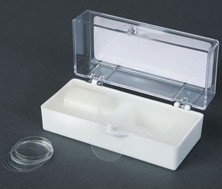
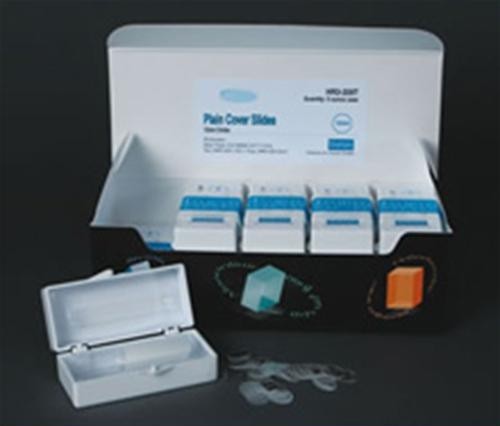

 GRAS reagent crystallization screen for proteins, including monoclonal antibodies, where Polyethylene glycol is the primary reagent, sampling pH 4.5 to 10
GRAS reagent crystallization screen for proteins, including monoclonal antibodies, where Polyethylene glycol is the primary reagent, sampling pH 4.5 to 10